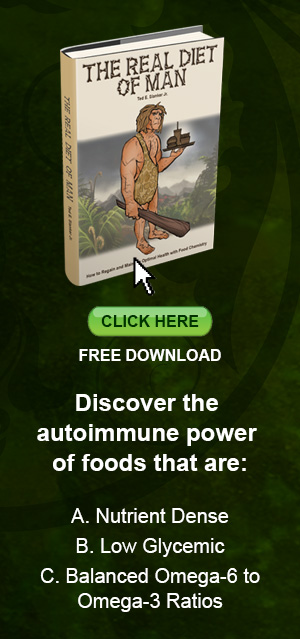Too fat? Eat Fat
Column #179 January 25, 2019
There are many top notch people doing credible work in nutritional science. Dr. Stephen Phinney is one of them. As a physician-scientist who has spent 40 years studying diet, exercise, fatty acids, and inflammation, he has published over 80 papers and has several patents to his credit.
After receiving his MD from Stanford University he realized there was a “bunch of paradoxes” between what he was taught to believe and what the evidences seemed to present regarding chronic diseases. So he went back to school and got a PhD in Nutritional Biochemistry from MIT then did post-doctoral training at Harvard and the University of Vermont.
In the 1970s Phinney was a proponent of carbohydrates because of his personal experience using carbohydrates as fuel in long-distance bicycling. So he set out to prove the theories about fat being a better fuel wrong. He says he ended up proving he was wrong and the fat for fuel approach was better. Now, after decades of research, his specialty has made him one of the world’s leading authorities on the Ketogenic Diet.
He emphasizes that the diet is very safe, yet it can be dangerous for folks taking prescription drugs. That’s because the diet may suppress their chronic diseases and when diseases such as diabetes are totally depressed, continuing to take prescription drugs can cause serious health issues. That’s why he advises new keto converts to consult with their physicians before changing their diet. Delaying drug withdrawal even a few weeks may be critical because changes in health can sometimes occur rapidly. Some diseases may be seriously suppressed in as few as six days! He also cautions about ignorance among physicians regarding nutrition. In other words, unless physicians understand nutritional science, they can’t properly advise patients on the keto diet. That’s why he started a clinic that advises patients and also physicians on making the transition.
Carbohydrates are an energy source. But when there’s very little carbohydrate in your diet, your body naturally switches to nutritional ketosis. Phinney coined the term “Nutritional Ketosis” which is a natural metabolic state where the body is fueled mainly by fats and ketones instead of carbohydrates (glucose). It occurs only when carbohydrate consumption goes so low that the liver converts mostly adipose tissue and dietary fats into ketones for energy.
The result of ketosis is that people lose weight, diabetes is suppressed, inflammation is lowered, HDL increases, LDL drops, asthma and seizures can stop, and saturated fat in the body is not a problem because it is used for fuel.
Phinney emphasizes several dietary recommendations:
● Fasting is not recommend because it can damage organs and reduce muscle tissue.
● Avoid as much as possible foods and oils high in Omega-6 fatty acids and eat fish.
● Reduce net carbohydrate consumption to 20g-50g per day and avoid all sugars.
● Do not count calories; rather eat to satiety.
● Consume broths for fat and minerals such as potassium and magnesium.
● Salt and saturated fats are not a problem. Our bodies need them.
● Monitor your ketone levels to maintain the keto diet.
● Everyone is an individual so there is no cookie cutter keto diet.
People wanting to follow a strict keto diet need to monitor their ketones with a Glucose Ketone Meter. These tests can be taken at home. By monitoring their ketones people can adjust their diet to stay within optimum ketosis levels. (See links below.)
Keto calculators suggest that a middle-aged, 160-pound man in average condition standing 5' 10" who does a moderate amount of exercise, will achieve mid-range ketosis when consuming 27g net carbs (grams of carbohydrates minus grams of fiber), 111g of protein, 181g of fat, and 2,185 calories per day. The protein/fat ratio is 38%/62%. Nailing down these ratios is not easy which is why monitoring ketone levels is better than trying to calculate the nutrients of every food item consumed. An example of a calculation for grass-fed beef follows.
Lean meat is 75% water. Fat is only 10% water. Bone is 22% water. In 100g of raw grass-fed 90/10 ground beef there is about 19.97g protein and 10g fat for a protein/fat ratio of 67%/33%. In 100g of grass-fed 78/22 ground beef there is about 16.57g protein and 22g fat for a protein/fat ratio of 43%/57%. A 50/50 mix of 100g of grass-fed ground beef has about 8.65g of protein and 50g of fat for a protein/fat ratio of 15%/85%.
When people load up on fat while trying to hold down the protein, the trick is to keep their Omega-6 to Omega-3 essential fatty acid (EFA) ratio as close to 1:1 as possible. Ratios above 4:1 are associated with being overweight and nearly every chronic disease. Of course, eating wild-caught seafood and supplementing with fish oil is great for lowering the ratio. To maintain the 1:1 ratio, eat fatty cuts of grass-fed and Omega-3 meats, grass-fed cheeses and butter, and Omega-3 eggs. Other sources of fats with balanced EFAs include broths and soups made from the same aforementioned meats and by cooking with grass-fed and Omega-3 butter, lard, and tallow.
Nuts are a favorite source of fat, but most have excessively high levels of Omega-6 EFAs. I prefer Macadamia nuts because their Omega-3 deficit is the lowest of the nuts. Four ounces of Macadamia nuts contain 6g net carbs, 8.8g protein, 85.6g fat, 1,477.6mg Omega-6, and 222.5mg Omega-3. For salad oils I prefer flaxseed oil, macadamia oil, and olive oil in that order.
Contrary to popular myths, the low fat/low salt diet is not healthy. Sugar and more than moderate levels of carbohydrates are not healthy. Starvation diets coupled with strenuous workouts are not healthy. As we all know and seen from watching the “Biggest Loser,” losing weight is always difficult. Losing it and keeping it off is even more difficult. This is why there are so many obese people who want to lose weight and don’t.
We are all entrenched in our ways and many people are addicted to sugar, breads, pastries, pastas, candy, and treats of all kinds. Breaking the old habits and ending addictions is something a major share of the population just can’t do. But the old saying is oh so true: “If you always do what you’ve always done, you’ll always get what you’ve always got.” So if you are fully determined to lose weight and accept the required changes in foods, flavors, and social traditions, it’s good to know many have done it. I did it starting in 1999 yet I still have cravings. But I resist the best I can and stay with the plan. The results are inspiring.
To your health.
Ted Slanker
Ted Slanker has been reporting on the fundamentals of nutritional research in publications, television and radio appearances, and at conferences since 1999. He condenses complex studies into the basics required for health and well-being. His eBook, The Real Diet of Man, is available online.
Don’t miss these links for additional reading:
Dr. Stephen Phinney video on Nutritional Ketosis and Ketogenic Diets (Part 1)
Dr. Stephen Phinney video on The Safety and Benefits of a Ketogenic Diet (Part 2)
Dr. Stephen Phinney video on Problem Solving a Ketogenic Diet (Part 3)
Ketogenic Diets and Physical Performance by Stephen D Phinney
KHC M3 Ketone Breath Meter is ideal for Ketogenic diet
10% Off Coupon for KHC M3 Ketone Breath Meter
How to Test Your Blood With a Home Ketone Meter by Laura Dolson
KetoDiet Buddy - Easy Macro Calculator for the Ketogenic Diet
An Increase in the Omega-6/Omega-3 Fatty Acid Ratio Increases the Risk for Obesity by Dr. Artemis P. Simopoulos
Essential Fatty Acids in Health and Chronic Disease by Artemis P. Simopoulos M.D.
The Importance of the Ratio of Omega 6 Omega 3 Essential Fatty Acids by Artemis Simopoulos M.D.
Cancer: The Untold Story by Ted Slanker
Ted Slanker’s Omega-3 Blood Test
Get Your Own Omega-3 Blood Test and use slanker as a code for a discount
Art and Science of Low Carbohydrate Living by Jeff S Volek and Stephen D Phinney
Read 77 Stephen Phinney Publications on ResearchGate




